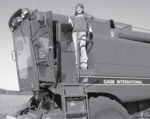Advertise Follow Us
Articles Tagged with ''research''
Frank Comments
Quit Bad-Mouthing No-Till
A recent discussion on a University of Nebraska forum centered around the fact that educators working on the same campuses often aren’t on the same track in seeing the value of no-till
Read More
The Lowdown From Dakota Lakes
Dwayne Beck shares some preliminary eye-opening results and current studies from the all-no-till research farm.
Read More
Is Tillage OK Once Every 10 Years?
There are better ways than moldboard plowing to reduce potential phosphorus runoff in no-tilled fields, experts say.
Read More


.png?height=125&t=1731942302&width=150)





